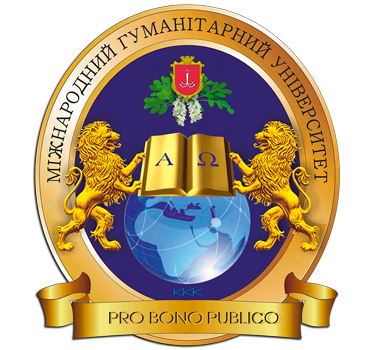ПОНЯТТЯ ПРЕАБІЛІТАЦІЇ ТА ЇЇ ВПЛИВ В ХІРУРГІЇ: СИСТЕМАТИЧНИЙ ОГЛЯД ЛІТЕРАТУРИ
DOI:
https://doi.org/10.31379/2411.2616.18.2.5Ключові слова:
реабілітація, передопераційні вправи, післяопераційні ускладнення, великі операції, функціональні параметри, огляд літератури.Анотація
Вступ. Значна кількість пацієнтів, які перенесли операцію, страждають від післяопераційних ускладнень. Ця проблема стала нагальною, її поширеність становить близько 30% серед пацієнтів, які проходять хірургічне лікування. Програма попередньої реабілітації була запропонована як доопераційна допоміжна терапія для того, щоб обійти дані наслідки, але існуючі дослідження показують суперечливі результати. Мета і завдання. Систематичний огляд літератури спрямований на вивчення ефективності концепції пререабілітації та її впливу на функціональні по- казники, післяопераційні ускладнення та якість життя пацієнтів. Матеріал і методи. Було запитано пошук в електронних базах даних: PubMed, Clinicaltrials.gov, rcpjournals.org для рандомізованих клінічних досліджень, які досліджували ефективність концепції преабілітації та її вплив на функці- ональні параметри, післяопераційні ускладнення та якість життя пацієнтів. Основним параметром результату була здатність попередньої реабілітації запобігти післяопераційним ускладненням у пацієнтів, які перенесли серйозні операції. Дослідженими вторинними параметрами були: оцінена функціональна здатність до і після операції, тривалість перебування в стаціонарі, вартість госпіталізації та якість життя після операції. Результати. Огляд включав 10 клінічних досліджень загалом 939 пацієнтів. Якість досліджень оцінювали за критеріями Delphi. У 10 із 10 досліджень досліджувався вплив цільової програми на зменшення післяопераційних ускладнень пацієнтів, тривалість госпіталізації у 7 із 10 досліджень та параметри дихання у 4 із 10 досліджень. Висновки. Потрібні широкомасштабні високоякісні дослідження, щоб під- твердити перспективи ранніх доказів і визначити частоту, інтенсивність та тривалість попередньої реабілітації, призначеної для досягнення оптимальних результатів.
Посилання
Preparing the patient for surgery to improve outcomes / D.Z.H. Levett, Edwards, M., Grocott, M., Mythen, M. // Best Pract Res Clin Anaesthesiol. – 2016. – Vol. 30(2). – P. 145–157.
Metabolic and the surgical stress response considerations to improve postoperative recovery / E.M. Helander, M.P. Webb, B. Menard [et al.] // Curr Pain Headache Rep. – 2019. – Vol. 23. – P. 33.
Postoperative fatigue / T. Christensen, H. Kehlet // World J Surg. – 1993. – Vol. 17(2). – P. 220–225.
A theory of postoperative fatigue: an interaction of biological, psychological, and social processes / P. Salmon, G.M. Hall // Pharmacology, biochemistry, and behavior. – 1997. – Vol. 56(4). – P. 623.
Prioritizing qual-ity improvement in general surgery / P.L. Schilling, J.B. Dimick, J.D. Birkmeyer // J Am Coll Surg. – 2008. – Vol. 207(5). – P. 698–704.
Prehabilitation, rehabilitation, and revocation in the Army. // Br Med J. – 1946. – Vol. 1. – P. 192–197.
The effects of preoperative exercise therapy on postoperative outcome: a systematic review / K. Valkenet, I.G. van de Port, J.J. Dronkers, W.R. de Vries, E. Lindeman, F.J. Backx // Clin Rehabil. – 2011. – Vol. 25. – P. 99–111.
Prehabilitation versus rehabilitation: a randomized control trial in patients undergoing colorectal resection for cancer / C. Gillis, C. Li, L. Lee [et al.] // Anesthesiology. – 2014. – Vol. 121(5). – P. 937–947.
Short-term preoperative smoking cessation and postoperative complications: a systematic review and meta-analysis / J. Wong, D.P. Lam, A. Abrishami, M.T. Chan, F. Chung // Can J Anaesth. – 2012. – Vol. 59(3). – P. 268–279.
Randomized controlled trial of prophylactic chest physiotherapy in major abdominal surgery / M. Fagevik Olsen, I. Hahn, S. Nordgren, H. Lonroth, K. Lundholm // Br. J. Surg. – 1997. – Vol. 84. – P. 1535–1538. doi:10.1002/bjs.1800841111. PMID:9393272
Healthrelated quality of life improves following pulmonary rehabilitation and lung volume reduction surgery / M.L. Moy, E.P. Ingenito, S.J. Mentzer, R.B. Evans, J.J. Reilly // Chest. – 1999. – Vol. 115. – P. 383–389. PMID:10027436.
Cancer-associated malnutrition, cachexia and sarcopenia: the skeleton in the hospital closet 40 years later / A. Ryan, D. Power, L. Daly, S. Cushen, B.E. Ní, C. Prado // Proc. Nutr. Soc. – 2016. – vol. 1e13.
Preferred reporting items for systematic review and meta-analysis protocols (PRISMA-P) 2015: elaboration and explanation. / L. Shamseer, D. Moher, M. Clarke [et al.] // BMJ. – 2015. – Vol. 349. – P. g7647.
The Delphi list: a criteria list for quality assessment of randomized clinical trials for conducting systematic reviews developed by Delphi consensus / A. Verhagen, H. de Vet, R. de Bie, A. Kessels, M. Boers, L. Bouter, P. Knipschild // J. Clin. Epidemiol. – 1998. – Vol. 51. – P. 1235–1241.
Licker, M., Karenovics, W., Diaper, J. et al. Short-Term Preoperative High-Intensity Interval Training in Patients Awaiting Lung Cancer Surgery: A Randomized Controlled Trial. // J Thorac Oncol. – 2017. – Vol. 12. – P. 323–333.
Two-Week Multimodal Prehabilitation Program Improves Perioperative Functional Capability in Patients Undergoing Thoracoscopic Lobectomy for Lung Cancer: A Randomized Controlled Trial / Z. Liu, T. Qiu, L. Pei [et al.] // Anesth Analg. – 2019.
Preoperative respiratory muscle endurance training improves ventilatory capacity and prevents pulmonary postoperative complications after lung surgery: a randomized controlled trial / H. Laurent, S. Aubreton, G. Galvaing [et al.] // Eur J Phys Rehabil Med. – 2020. – Vol. 56. – P. 73–81.
Cardiopulmonary exercise testing screening and pre-operative pulmonary rehabilitation reduce postoperative complications and improve fast-track recovery after lung cancer surgery: A study for 342 cases / K. Gao, P.M. Yu, J.H. Su [et al.] // Thorac Cancer. – 2015. – Vol. 6. – P. 443–449.
Effect of Exercise and Nutrition Prehabilitation on Functional Capacity in Esophagogastric Cancer Surgery: A Randomized Clinical Trial / M.M. Enrico, A. Rashami, L. Sarah-Eve, V.A. Ramanakumar, E.F. Lorenzo, C. Francesco [et al.] // JAMA Surg. – 2018. – Vol. 153(12). – P. 1081–1089.
Prehabilitation in patients awaiting elective coronary artery bypass graft surgery – effects on functional capacity and quality of life: a randomized controlled trial / C. Steinmetz, B. Bjarnason-Wehrens, H. Baumgarten, T. Walther, T. Mengden, C. Walther // Clinical Rehabilitation. – 2020. – Vol. 34(10). – P. 1256–1267.
Personalised Prehabilitation in High-risk Patients Undergoing Elective Major Abdominal Surgery: A Randomized Blinded Controlled Trial / A. Barberan-Garcia, M. Ubre, J. Roca, A.M. Lacy, F. Burgos, R. Risco, D. Mombla´n, J. Balust [et al.] // Ann Surg. – 2017.
Feasibility of conducting an active exercise prehabilitation program in patients awaiting spinal stenosis surgery: a randomized pilot study / A-A. Marchand, M. Suitner, J. O’Shaughnessy, CÉ Châtillon, V. Cantin, M. Descarreaux // Sci Rep. – 2019. – Vol. 9(1). – P. 12257. doi:10.1038/s41598-019-48736-7
Impact of prehabilitation on morbidity and mortality after pulmonary lobectomy by minimally invasive surgery: a cohort study / F. Boujibar, T. Bonnevie, D. Debeaumont, M. Bubenheim, A. Cuvellier, C. Peillon, F.-E. Gravier, J.-M. Baste // J Thorac Dis. – 2018. – Vol. 10(4). – P. 2240–2248. doi:10.21037/jtd.2018.03.161
Prehabilitation in patients undergoing pancreaticoduodenectomy: a randomized controlled trial / F. Ausania, P. Senra, R. Meléndez, R. Caballeiro, R. Ouviña, E. Casal-Núñez // Rev Esp Enferm Dig. – 2019. – Vol. 111(8). – P. 603–608. doi:10.17235/reed.2019.6182/2019
The ability of prehabilitation to influence postoperative outcome after intra-abdominal operation: a systematic review and meta-analysis / J. Moran, E. Guinan, P. McCormick [et al.] // Surgery. – 2016. – Vol. 160. – P. 1189–1201. doi:10.1016/j.surg.2016.05.014
American College of Sports Medicine roundtable on exercise guidelines for cancer survivors / K.H. Schmitz, K.S. Courneya, C. Matthews, W. Demark-Wahnefried, D.A. Galvao, B.M. Pinto [et al.] // Med Sci Sports Exerc. – 2010. – Vol. 42. – P. 1409–1426.
Role of oxygen debt inthe development of organ failure sepsis, and death in high-risksurgical patients / W.C. Shoemaker, P.L. Appel, H.B. Kram // Chest. – 1992. – Vol. 102(1). – P. 208–215.
Experience with the preoperative invasivemeasurement of haemodynamic, respiratory and renal functionin 100 elderly patients scheduled for major abdominal surgery / P. Older, R. Smith // Anaesth Intensive Care. – 1988. – Vol. 16(4). – P. 389–395.
A randomized clinical trial of the effect of deliberate perioperative increase of oxy-gen delivery on mortality in high-risk surgical patients / O. Boyd, R.M. Grounds, E.D. Bennett // JAMA. – 1993. – Vol. 270(22). – P. 2699–2707.
Society ATSER. Standards for the diagnosis and management of patients with COPD. – 2014.
ASA Klassifikation: Wandel im Laute der Zeit und Darstellung in der Literatur / T. Irlbeck, B. Zwissler, A. Bauer // Anaesthesist. – 2017. – Vol. 66. – P. 5–10.
High-intensity interval training elicits higher enjoyment than moderate intensity continuous exercise / J.S. Thum, G. Parsons, T. Whittle, T.A. Astorino // PLoS One. – 2017. – Vol. 12. – P. e0166299.
Mechanisms of exercise-induced cardioprotection / S.K. Powers, A.J. Smuder, A.N. Kavazis, J.C. Quindry // Physiology (Bethesda). – 2014. – Vol. 29. – P. 27–38.
Protective effects of aerobic exercise on acute lung injury induced by LPS in mice / C.T. Reis Goncalves, C.G. Reis Goncalves [et al.] // Critical Care. – 2012. – Vol. 16. – P. R199.






